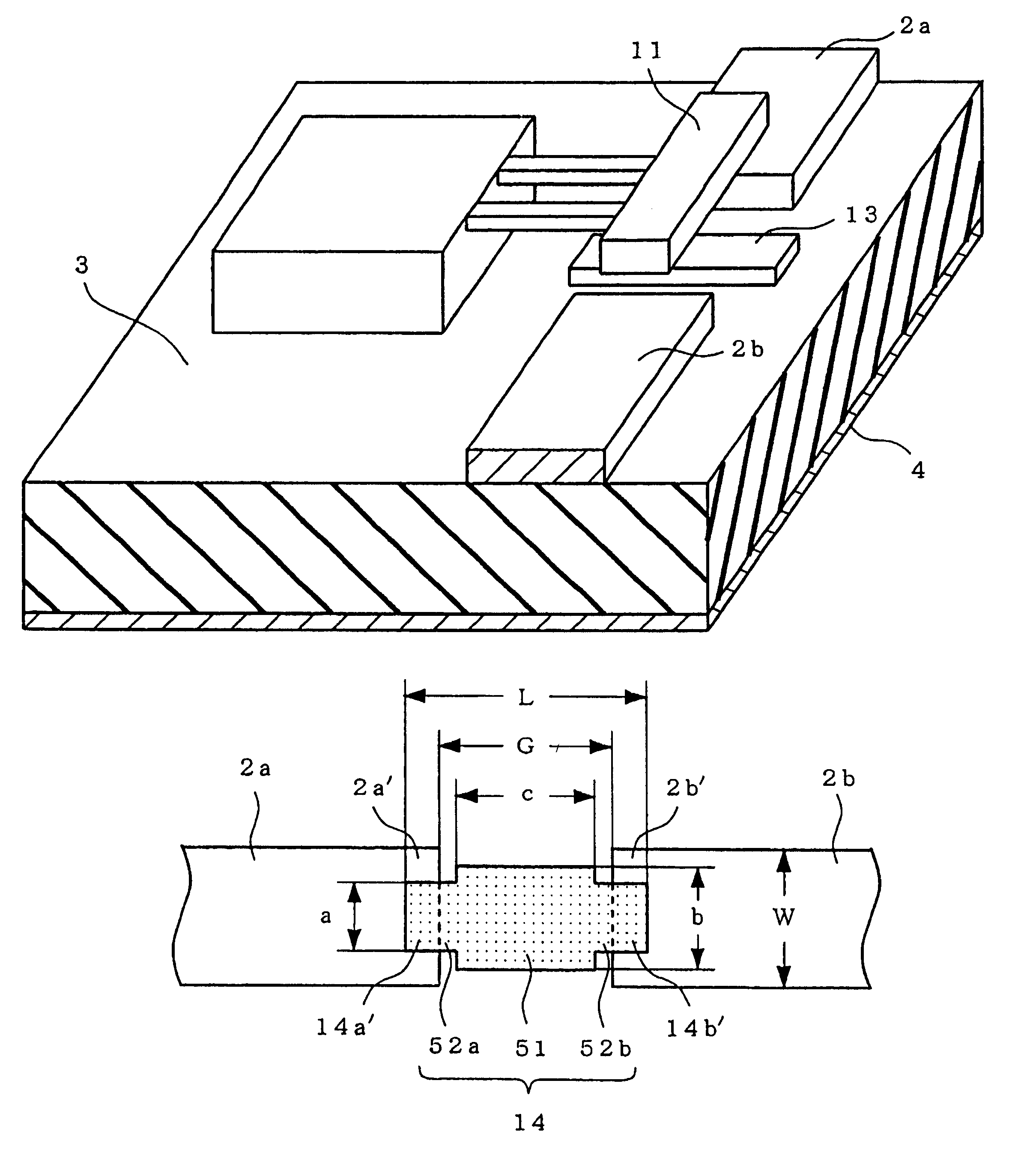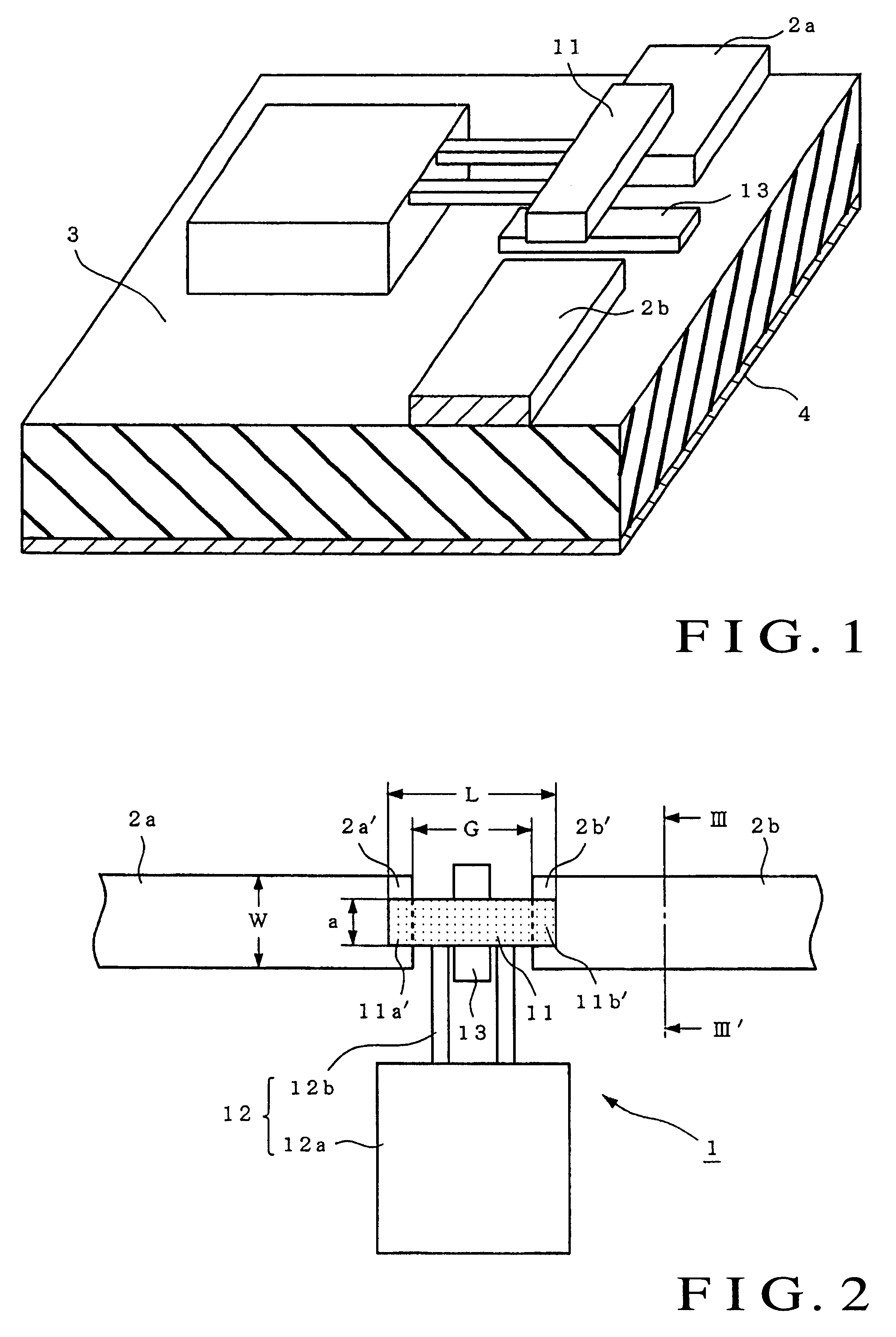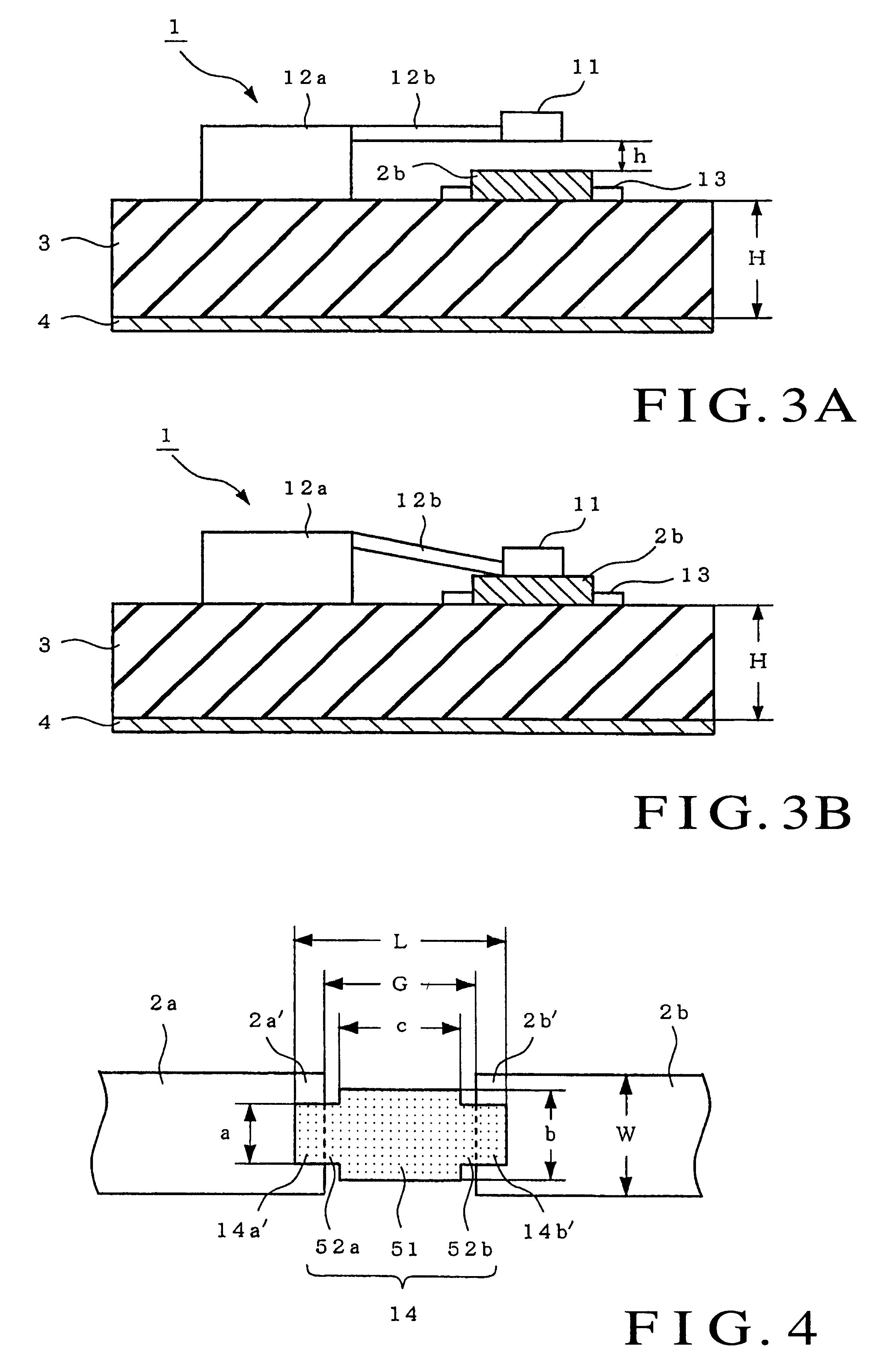Micromachine MEMS switch
a micromachine switch and switch technology, applied in the direction of waveguide devices, contact surface shapes/structures, electrical apparatus, etc., can solve the problems of poor off isolation characteristic, reduce the capacitive coupling of them, improve the off isolation characteristic of the micromachine switch
- Summary
- Abstract
- Description
- Claims
- Application Information
AI Technical Summary
Benefits of technology
Problems solved by technology
Method used
Image
Examples
first embodiment
FIG. 1 is a perspective view showing the structure of a micromachine switch according to the first embodiment of the present invention. FIG. 2 is a plan view of the micromachine switch shown in FIG. 1.
As shown in FIG. 1, a micromachine switch 1 is constructed by a switch movable element 11, support means 12, and switch electrode (driving means) 13. The micromachine switch 1 is formed on a dielectric substrate 3 together with two RF microstrip lines (distributed constant lines) 2a and 2b. A GND plate 4 is disposed on the lower surface of the dielectric substrate 3.
The microstrip lines 2a and 2b are closely disposed apart from each other at a gap G. The width of each of both microstrip lines 2a and 2b is W.
The switch electrode 13 is disposed apart between the microstrip lines 2a and 2b on the dielectric substrate 3. The switch electrode 13 is formed to have a height lower than that of each of the microstrip lines 2a and 2b. A driving voltage is selectively applied to the switch electr...
second embodiment
FIG. 4 is a plan view showing the major part of a micromachine switch according to the second embodiment of the present invention. In FIG. 4, the same reference numerals as in FIG. 2 denote the same parts, and a detailed description thereof will be omitted. A switch movable element 14 shown in FIG. 4 is cantilevered on a support means 12, similar to the switch movable element 11 shown in FIG. 2. A switch electrode 13 is disposed at a gap G between microstrip lines 2a and 2b. In FIG. 4, however, the description of the support means 12 and switch electrode 13 is omitted.
This also applies to FIGS. 5 to 9 (to be described later).
A micromachine switch 1 shown in FIG. 4 uses the switch movable element 14 shown in FIG. 4 in place of the switch movable element 11 shown in FIG. 1.
The two ends of an edge of the switch movable element 14 on the microstrip line 2a side are notched to form a projection (second projection) 52a. Similarly, the two ends of the edge of the switch movable element 14 ...
third embodiment
FIG. 7 is a plan view showing the main part of a micromachine switch according to the third embodiment of the present invention. A switch movable element 15 shown in FIG. 7 is different from the switch movable element 14 in FIG. 4 in that a length c of a movable element main body 53 is larger than a gap G, and a width b of the movable element main body 53 is equal to a width W of each of microstrip lines 2a and 2b. In FIG. 7, reference numerals 54a and 54b denote projections (second projections).
Since the length c of the movable element main body 53 is larger than the gap G, the portions of the movable element main body 53 are included in distal end portions 15a' and 15b' of the switch movable element 15. That is, the portions of the movable element main body 53 oppose the microstrip lines 2a and 2b, respectively.
Thus, the opposing area between the switch movable element 15 in FIG. 7 and microstrip lines 2a and 2b becomes larger than that shown in FIG. 4. By using the switch movable...
PUM
 Login to View More
Login to View More Abstract
Description
Claims
Application Information
 Login to View More
Login to View More - R&D
- Intellectual Property
- Life Sciences
- Materials
- Tech Scout
- Unparalleled Data Quality
- Higher Quality Content
- 60% Fewer Hallucinations
Browse by: Latest US Patents, China's latest patents, Technical Efficacy Thesaurus, Application Domain, Technology Topic, Popular Technical Reports.
© 2025 PatSnap. All rights reserved.Legal|Privacy policy|Modern Slavery Act Transparency Statement|Sitemap|About US| Contact US: help@patsnap.com



